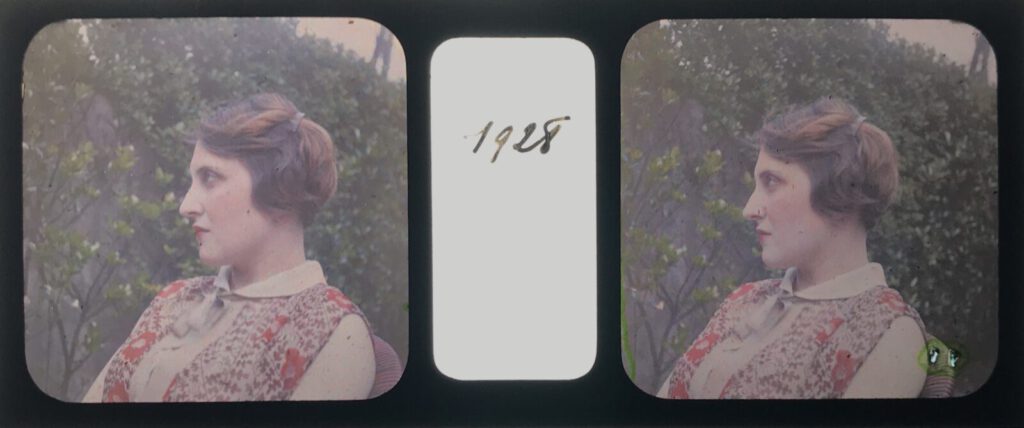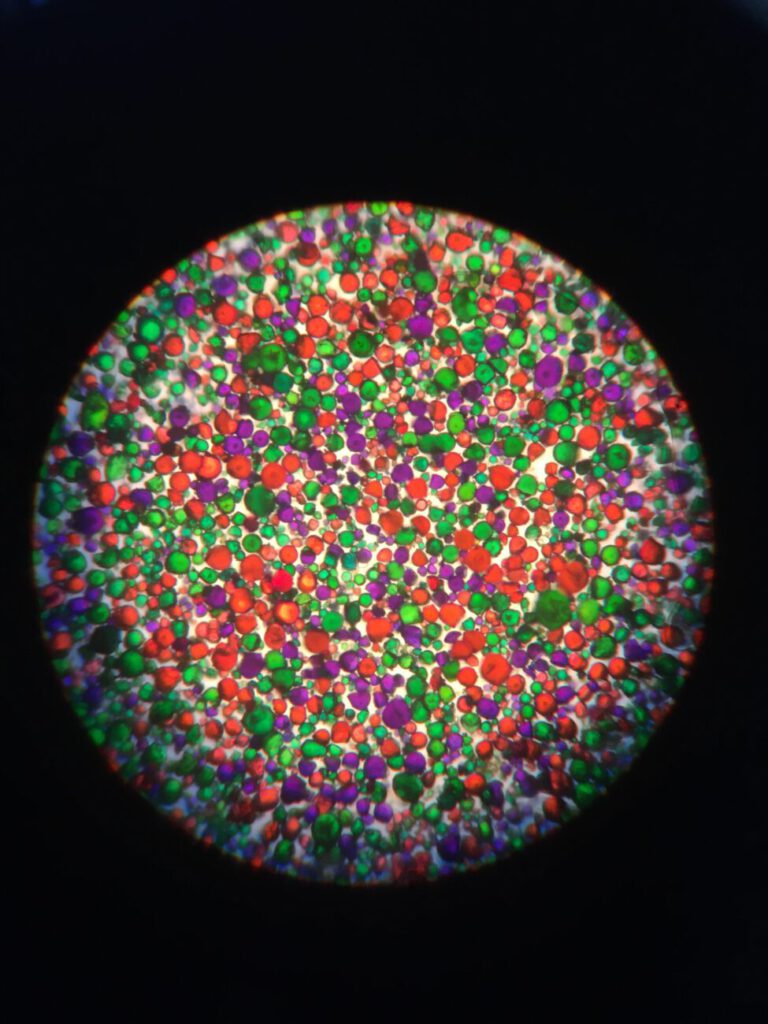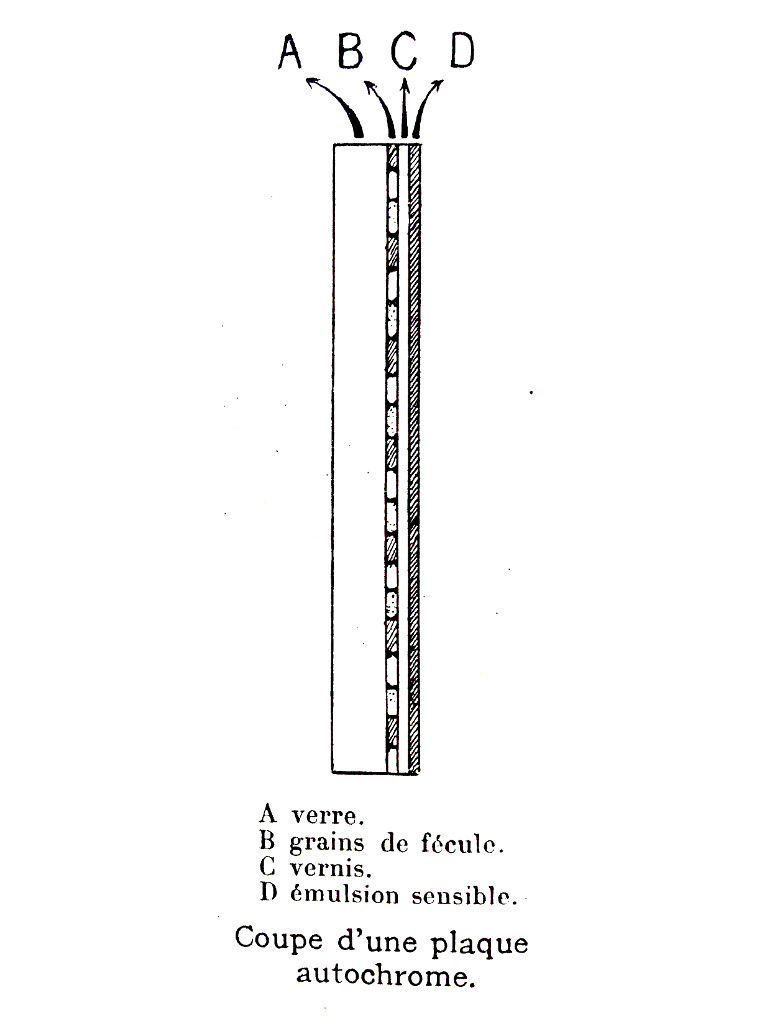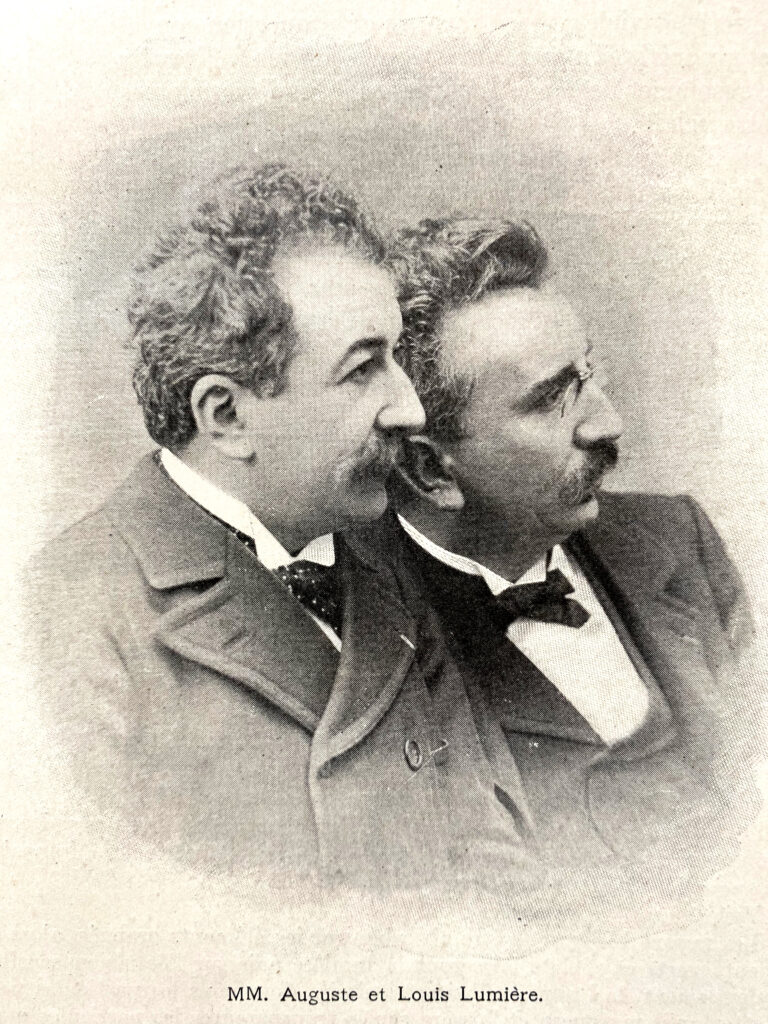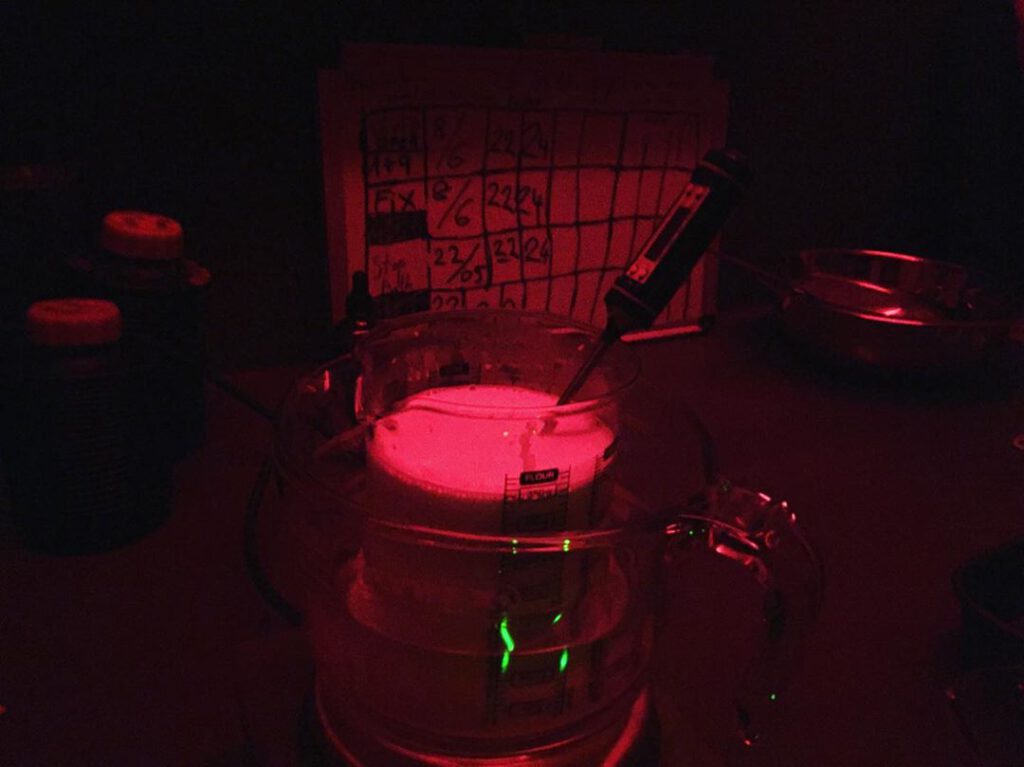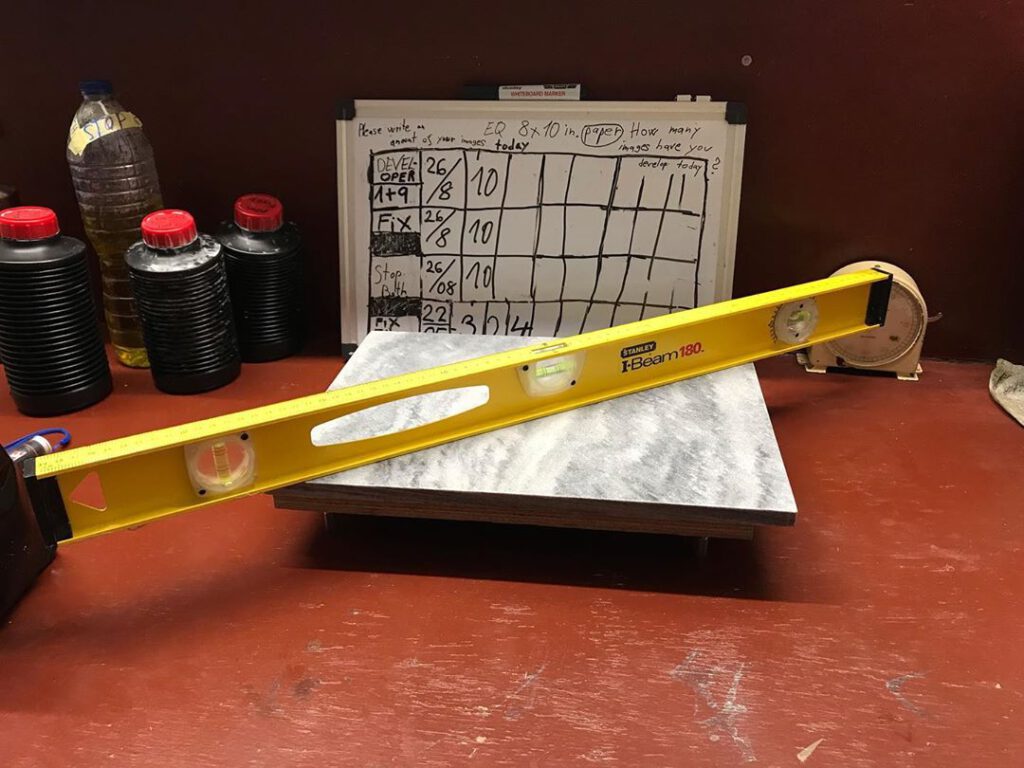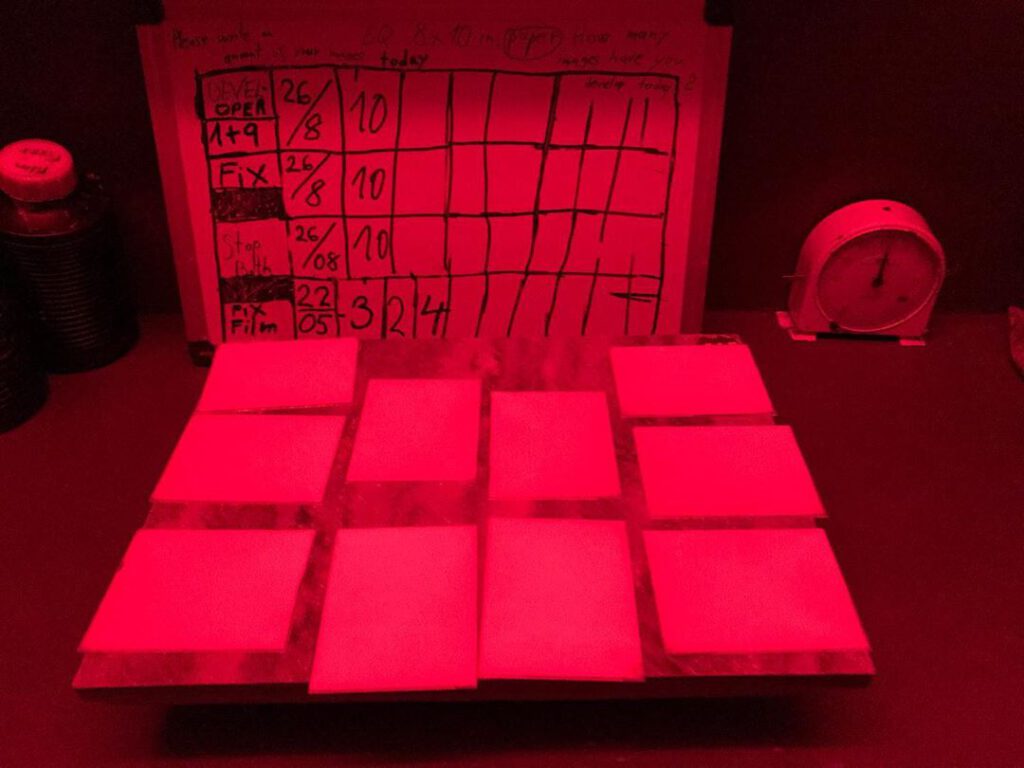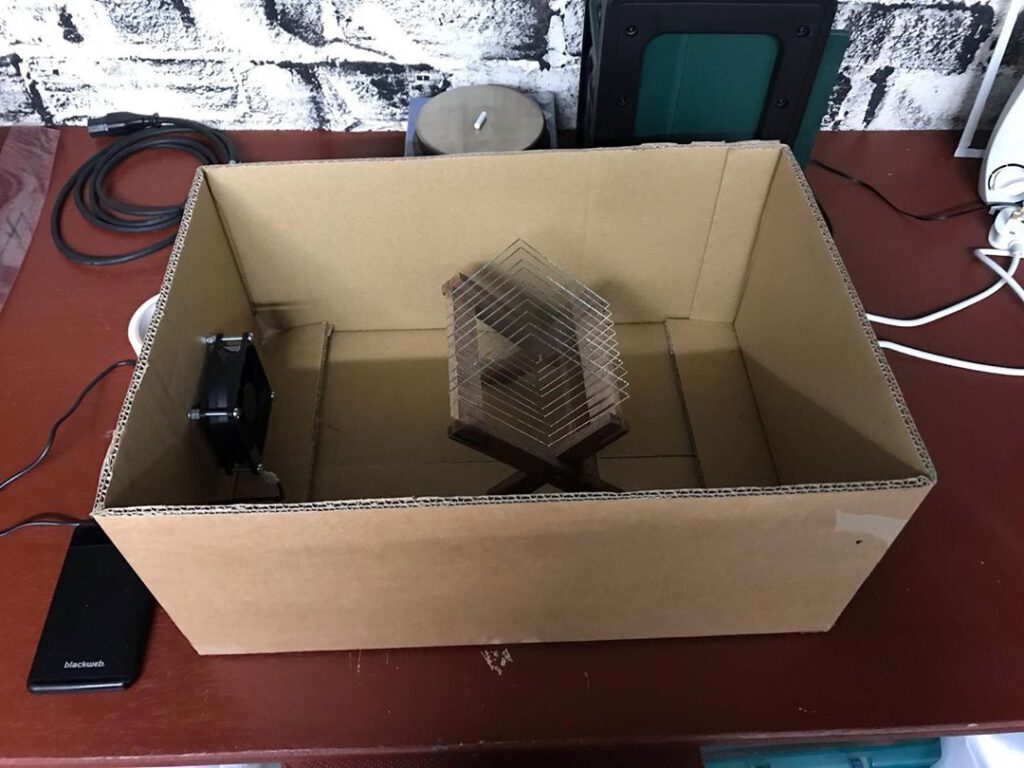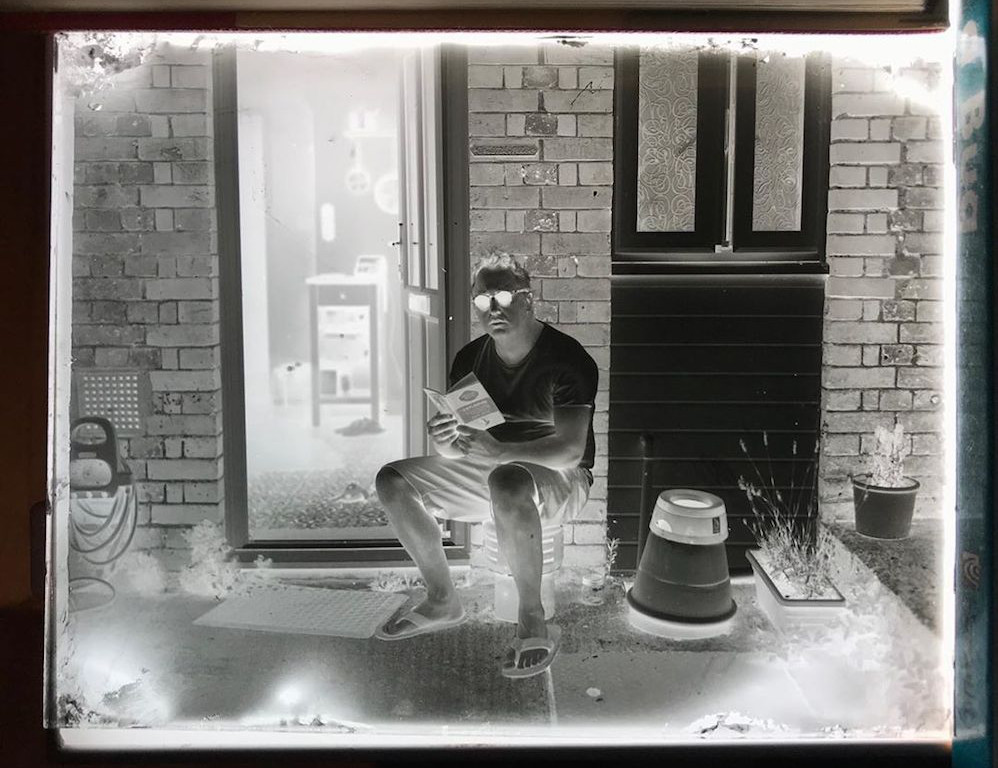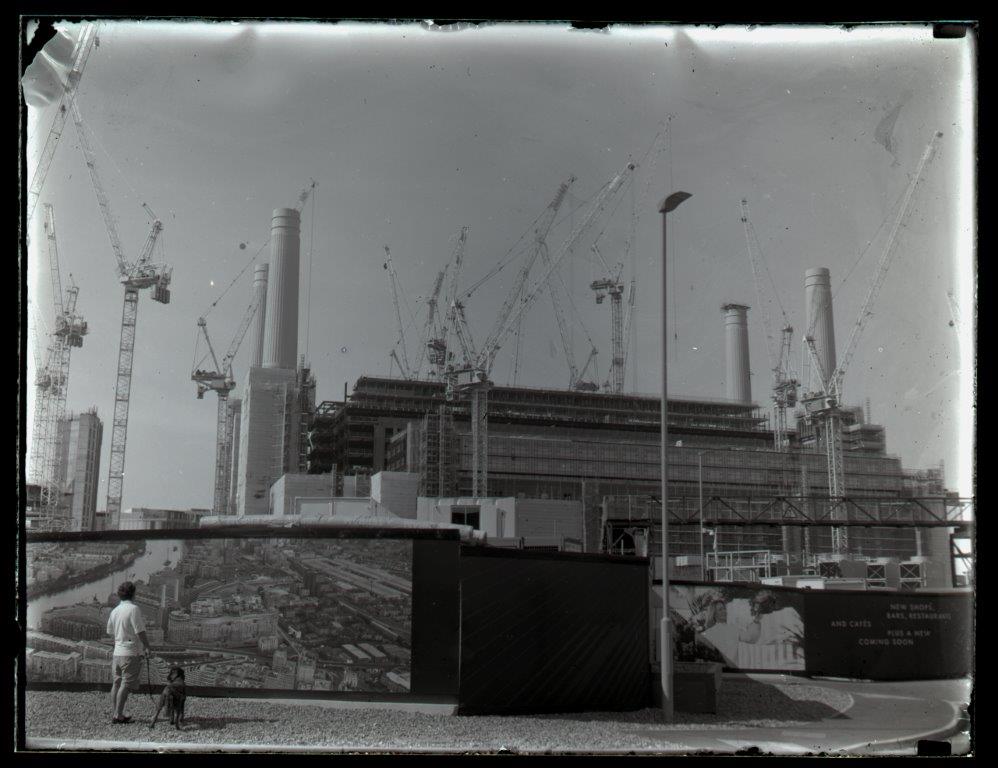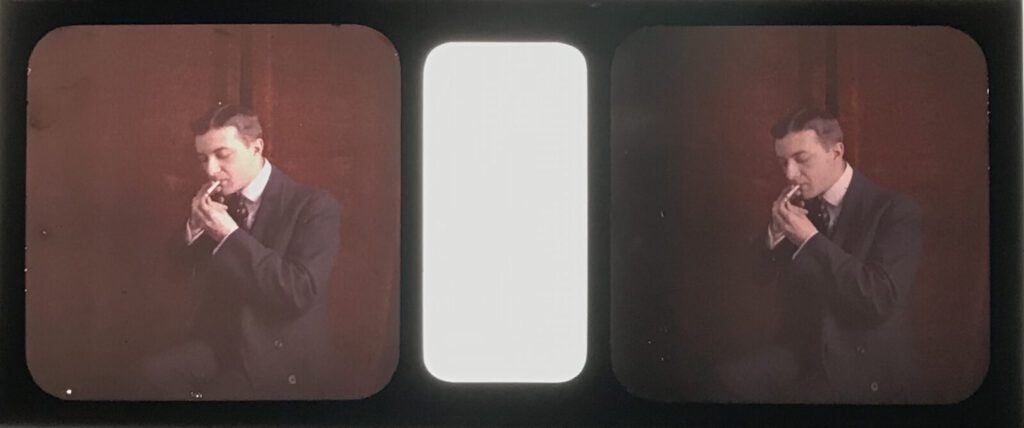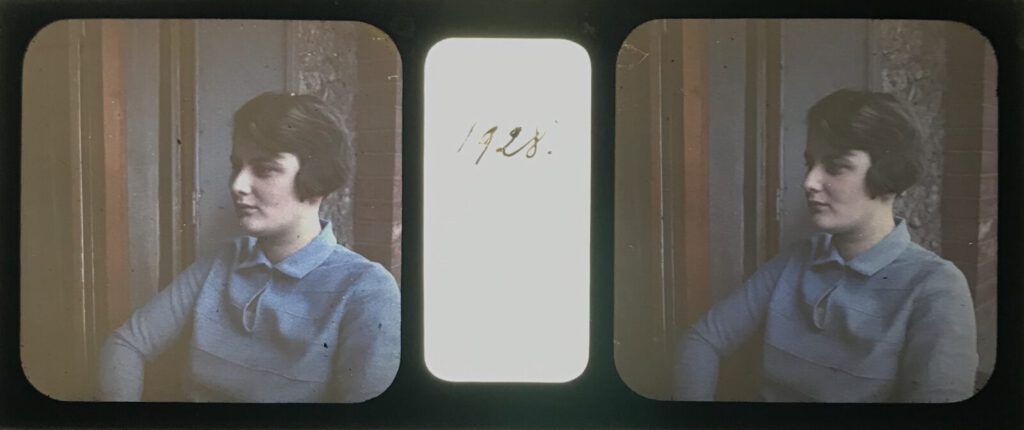The Autochrome project
written for the stereosite by Peter Norman (Burgess Hill, UK)
The Autochrome Project is a personal endeavour to produce a workable method of recreating the Lumière Autochrome.
The Autochrome was one of the principal ways of producing colour photography in the early 20th Century. Patented in 1904 by the brothers Auguste and Louis Lumière, the process consisted of a glass plate coated with a microscopic layer of mixed potato starch granules dyed orange-red, green and blue-violet. This created a random mosaic screen in which each particle of starch acted as a colour filter and then a black and white silver emulsion was coated on top. The plate was placed in the camera, back to front with the mosaic screen facing towards the lens. During Exposure, light hitting the surface of the starch would split into its additive colours of red, green and blue before reaching the photosensitive surface beneath. The plate is then put through a ‘reversal process’ which involves developing the exposed negative image and then bleaching it away using an acid. This leaves the un exposed silver which is then fogged with light and re developed to produce a positive image. When viewed through transmitted light the random pattern of the microscopic grains would recreate the original colour of the scene.
A much sited characteristic of the Autochrome is its colour palette. With the view of the dyed starch as an analogue to coloured pigment, the process dovetails uniquely between the worlds of photography and painting; on the one hand it offers up a clear view of a past life and on the other rendering a twilight impression of a world that we covet.
These characteristics have formed my reasons for wanting to be able to explore and use the colour palette for making photographs on glass. Following a revival of learning and practice in early photographic processes this has increased the knowledge and interest of these techniques. Due to the complexity of the Autochrome production I feel an alternative method of reproducing this process needs to be considered. By drawing from the original Lumiere research materials reproduced in ‘The Lumiere Autochrome, History, Technology & Preservation’ by Bertrand Lavedrine and Jean Paul Gandolfo, this has provided me with a foundation to how this could be possible. By breaking down the process into its constituent parts, alternative ways of looking at each stage can be achieved. This has consisted of research into dyeing different starches, how it is applied onto glass and how this can be coated with photographic chemistry.
To expand upon this research and development, in October I visited the George Eastman House in Rochester, New York to learn Photographic Emulsion making with Process Historian, Nick Brandreth & Mark Osterman. This was part of a weeklong private tuition that involved making a Silver Bromide Dry Plate emulsion and coating it onto glass plates. Following this I have begun to start making basic silver bromide emulsions on my own. The next stage is to focus on developing more complex emulsion formulas that will increase the possibilities of The Autochrome Project.
In support of this, my research has included looking at Stereo Autochromes as I believe this to be a fascinating area in its own right. A large amount of these appear to have come from private collections and offer an intimate view of life on the early 20th Century. Whilst my study is not only for the pursuit of Stereoscopy, I feel that by exploring this area in future can only increase the scope of my project.
Peter Norman (Burgess Hill, UK)
I am a UK based photographer specialising in historical processes, including dry plate photography. A few years ago I came across an early colour process called the Autochrome from a portrait of the author Mark Twain. I quickly became fascinated with Autochromes and decided to see if it was possible to recreate this technique. My progress is ongoing and my project has involved visiting the Eastman House Museum in Rochester, New York to learn Photographic Chemistry. Alongside this I am a Art Handling Technician at the National Portrait Gallery in London.
Instagram-profile: theautochromeproject

